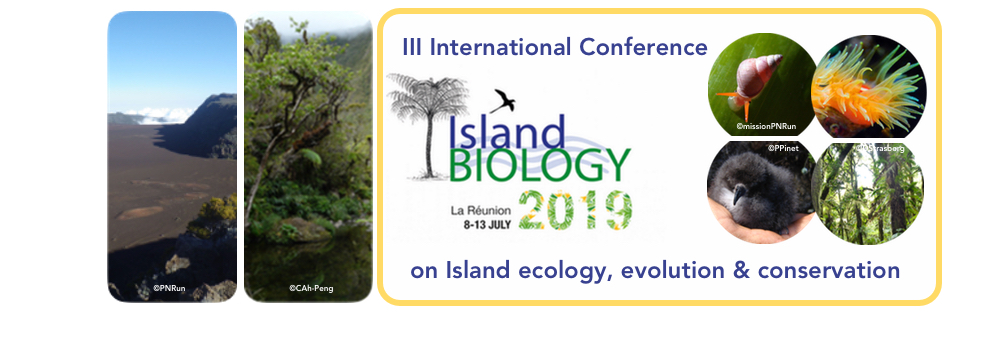Genetic diversity on islands in archipelagos might be significantly shaped by interisland geneflow. While this might on one hand contribute to increased diversity levels within islands it also might homogenize differences between islands in species or species groups if hybridization exist. This might lead to the impression of a monophyletic origin of island taxa and to an underestimation of evolutionary distances between species, especially if sequence data from organelles are studied. Here we investigate chloroplast haplotype diversity for Micromeria of the Canary islands. A recent morphological revision and molecular data support that the genus consist here exclusively of single island endemic species. Phylogenetic and nuclear genotype analysis show that geneflow between the species exist and evolution of the genus is highly influenced by hybridization. We constructed a network of chloroplast haplotypes using multilocus Next Generation Sequencing approaches to increase resolution compared to earlier studies. Around 500 samples were investigated for the archipelago comprising all species and islands which are assigned to 94 haplotypes defined using 5500 bp of 11 loci. All marker systems investigated so far, show very strong connectivity between the younger islands of the archipelago. CpDNA shows low genetic structure between some of the islands that result from the pattern of shared haplotypes. Species can have multiple haplotypes in common also between islands which strongly indicate sequential interisland colonization as seeds, especially between La Gomera, Tenerife, and La Palma. The pattern suggest, that when single colonizers arrive as seed, they might hybridize with already established individuals as pollen donors. Because chloroplast DNA is inherited maternally, resulting populations contain then the haplotypes of the colonizer. Such a model would explain inconsistencies between cpDNA and nuclear markers: Within islands different haplotypes can be found in species with low nuclear genetic diversity, between islands haplotypes can be shared in different species with high nuclear genetic diversity. The model would also explain the persistence of the different cpDNA markers in the species even if probably originated from single colonizing individuals. Overall, this can lead to high diversity of cpDNA markers within an island.

|
|
|
|
Chloroplast haplotype analysis of Canary islands Micromeria indicate inter-island colonization as factor to explain genetic diversity patterns
1 : Institute for Integrative Nature Conservation Research, University of Natural Resources and Life Sciences
(Boku)
Gregor Mendel Str. 33, 1080 Vienna -
Austria
2 : Department of Biological Sciences, North Dakota State University
* : Corresponding author
Fargo -
United States
|
| Online user: 59 | RSS Feed |

|
 PDF version
PDF version